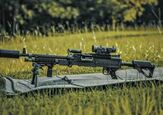Welcome to TFB’s Wheelgun Wednesday, our weekly foray into the world of wheelguns. This week, we’ll take a look at the Smith & Wesson 36, which is a 5-shot, small-frame revolver chambered in .38 Special. The Model 36 is a purpose built self-defense revolver, which is also associated with detective work during the 20th Century. Is it still a viable self-defense weapon for the 21st Century? Let’s see.
Wheelgun Wednesday @ TFB
- M.R. New System Arms Cucciolo – The World’s Largest Revolver
- Custer Revolver at Rock Island Auction’s Upcoming Sale
- Charter Arms Spotlights
- Booligan’s Taurus Ultra Snubby Handgun – TUSH
- Silencing the Gap – Part 1
In 1950, Smith & Wesson launched their first J-Frame at the International Association of Chiefs of Police convention. From this meeting, the new model was dubbed the Chief’s Special. In 1957, S&W began numbering their models, of which the Chief’s Special was numbered the Model 36. Since the first J-Frame was introduced 74 years ago, Smith & Wesson now lists 14 separately numbered J-Frames with a total of 38 variations spread out between four caliber options; .22LR, .22 Magnum, .38 Special, and .357 Magnum.
Based on the serial number, this Smith & Wesson 36 sample dates to around 1970. Although there were 3-inch barreled versions made, this example sports the typical 1.88-inch barrel, which is pinned to keep the barrel rock steady. The front sight blade is integral to the barrel and thus has the same finish as the rear milled gutter sight, which made it difficult to get a great sight picture. To remedy this black-on-black sighting system, I simply used orange fingernail polish on the front sight ramp to create a high-contrast sight picture. The hammer spur doesn’t interfere with the double action sight picture, and it is textured nicely for cocking the hammer back for single action.
Since Smith & Wesson sells the Model 36 under the modern “Classics” line, I’ve included the specs from the current manufacture, but I’ve added notes where the Classic 36 differs from the original.
The old wood service grips supplied with the Model 36 felt good in my hand, but they take a bit more practice for consistency since there’s less material for the hand to purchase compared to larger grips. The service-style grips are extremely easy to conceal, and since they’re not rubbery, they don’t catch an untucked shirt. I generally love service grips for the concealment factor, but it’s one of those tradeoffs to consider when it comes to comfort and control while shooting. The factory service grips as shown here never interfered with ejecting spent cases or loading with speedloaders.
Overall, I’ve really enjoyed the Smith & Wesson 36. The .38 Special cartridge is still potent enough for self-defense, and I never felt undergunned while carrying it. Given the history of three-quarters of a century since the Chief’s Special debuted, every type of holster ever devised should be available to fit the S&W Model 36. If you regularly (or occasionally) carry a J-Frame revolver, what type of holster do you use?
What do you think about the Smith & Wesson 36? If you already own one, how has your experience been?

